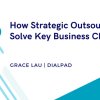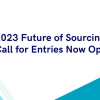The COVID-19 pandemic has amplified the level of uncertainty in an already volatile time for markets and supply chains.
As demonstrated in Deloitte’s 2020 Global Chief Procurement Officer Flash Survey, procurement leaders are facing ever-increasing complexities. Customer expectations are rising, internal stakeholders are increasing their demands, economies are becoming more volatile, technological advancement requires significant attention, and accessing talent with the right skills at the right time is a constant challenge. Navigating these internal, external, digital, and talent complexities did not get any easier with the arrival of the COVID-19 pandemic.
Facing these unprecedented challenges, procurement leaders not only need to continue to navigate the ongoing pandemic, but must also help their organizations become more agile and resilient to secure their long-term success.
Current Priorities
COVID-19 spread so widely and so quickly that procurement organizations had little choice but to focus on primarily tactical, near-term, and reactionary measures to address the immediate needs of their respective organizations. Years of focusing on supplier consolidation and inventory optimization have left many exposed and with few strategic options.
The biggest immediate priority for CPOs and their respective organizations right now overwhelmingly appears to be cost management, with approximately eight times more day-to-day focus when compared to other areas. This aligns with additional survey findings, showing that two-thirds of organizations are planning to pursue cost reduction strategies post-COVID-19, compared to just one-third pre-COVID-19.
In addition to cost management, procurement leaders have focused heavily on ensuring continuity of supply. Business impact from the first wave of COVID-19 infections took effect between May and early July 2020. Supplier bankruptcies, cybersecurity breaches, and general market volatility presented challenges that were difficult to anticipate and adjust to effectively – resulting in widespread supply issues. As expected, most responded with a mix of tactical and strategic measures, as about 40% of top-ranked strategies were short-term and tactical, including activating alternative sources, increasing inventory levels, and injecting capital into their supply chain to quickly respond and prevent further supply disruption. An additional 37% of strategies were also somewhat tactically driven, with the potential to become strong foundations for more strategic plays, such as enhancing supplier relationships and supplier collaboration. Building supplier relationships and fortifying supplier networks enhances a procurement organization’s ability to be agile and flexible in the face of disruption.
However, priorities such as cost management and continuity of supply can’t be delivered without employees feeling empowered and supported to be their best while working remotely. This is easier said than done, especially given how quickly the nature of work fundamentally shifted from in-person to almost exclusively remote work. Due to this disorienting change, it is not surprising that two of the top three most critical success factors for procurement organizations to navigate the pandemic revolve around employees and teams, namely workforce safety and effective virtual working. The overall effectiveness of teams and their ability to deliver on the organization’s biggest priorities requires leadership to thoughtfully build and deploy effective talent strategies.
Learning to Thrive
Only 28% of survey respondents expect a quick return to pre–COVID-19 economics, while the majority (about 70%) expect and are planning for a much longer economic downturn. This is further reinforced by 64% of survey respondents who indicated they have shifted from defense to offense by focusing on adapting their supply chains to thrive in the "next normal." COVID-19 has transformed the foundation of how business operates, and procurement leaders must enable greater agility and resiliency to handle the volatility present in the marketplace.
Investing in ‘next-gen’ technology to increase supply chain transparency, reduce risk, and protect supply continuity is critical to drive inefficiencies and cost out of supply chains. Our survey also found that only 50% of procurement organizations surveyed had high or very high visibility into their tier 1 suppliers, while 90% of organizations rated visibility into their extended supply networks as moderate to very low. Given most supply continuity failures are attributable to issues beyond tier 1, CPOs must improve their understanding of suppliers and the risks they pose by enacting risk mitigation approaches and accelerating digitization in upgraded systems to improve visibility and analytics capabilities.
Finally, CPOs need to think about their people strategies not just now, but well into the future. With COVID-19 persisting through the remainder of 2020 and into 2021, and the likely long-term systemic shift in work expectations driven by the acceleration to remote working, temporary or underdeveloped talent strategies will at best be insufficient to meet the changing needs of employees. However, robust talent strategies could create differentiated talent acquisition and retention potential. With the war for talent heating up, especially in areas like Procurement, leaders must design transformative talent strategies that empower, energize, and support employees to help them become more effective as they continue operating in a virtual work environment.
Lessons from the "Thrivers"
It is clear that the ability to quickly pivot and flex as an organization is essential to mitigating risk and navigating near- and long-term challenges. Our survey identified roughly 20% of respondents as “Thrivers” who had already entered, or were about to enter, the Thrive stage of recovery and start excelling in the “next normal.” When isolated, we found clear differences in their strategies and priorities relative to their peers, and they:
1. had higher visibility into both tier 1 and tier 2 suppliers
2. were twice as likely to prioritize digitization as a day-to-day focus
3. were seven times more likely to slightly expand their overall supply base in response to supply-side vulnerabilities exposed by COVID-19
This suggests those organizations were able to react and adapt quickly, providing ample time to identify opportunities, think strategically, and execute against their priorities. Doing so allowed them to turn their supply chains into a competitive advantage.
Increasing Disruption, Increasing Opportunity
In a world in which uncertainty and disruption will likely remain a constant, CPOs will need to be even more resourceful and forward-thinking to deliver their organization’s strategy. A focus on the following areas in the near- and long-term will be critical for success:
Near-Term:
- Prioritizing cost management to stabilize the business
- Ensuring continuity of supply through both tactical and strategic measures
- Developing talent strategies to help employees manage the disorienting shift from in-person to virtual work
Long-Term:
- Enhancing business performance via supply management capabilities and investing in ‘next-gen’ technologies
- Increasing visibility throughout the supply network (tier 1 and beyond) through risk mitigation approaches and accelerated digitization
- Investing in long-term, permanent talent strategies
Your organization’s ability to react in the near-term and establish transformative strategies in the long-term will not only help you survive disruption, but thrive in it.









